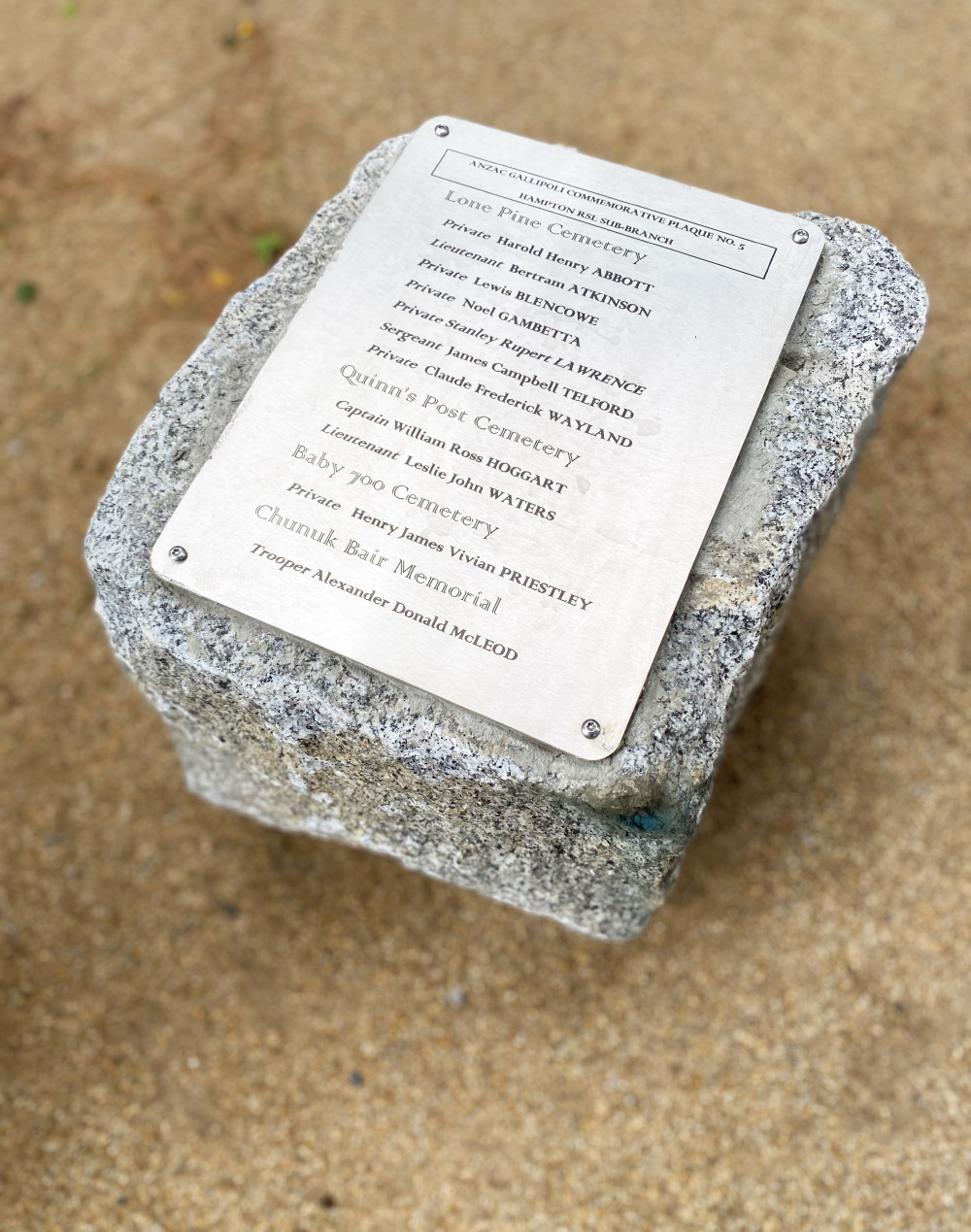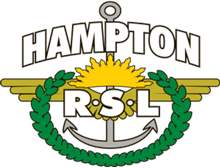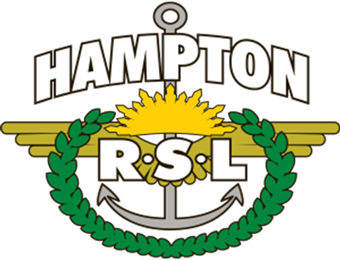The Gallipoli Memorial Garden provides a place of reflection for local Anzac history and enhances Hampton RSL Sub Branch grounds. It also provides an opportunity for the local community and schools to know more about those brave men who made the ultimate sacrifice more than 100 years ago. It gives greater context when we recite ‘Lest We Forget’.
Officially unveiled by Ms Nina Taylor MP, representing the Minister for Veterans in the presence of representatives from all levels of Government and the Turkish Consul-General Mr Eser Torun on 16 April 2021. The Memorial Garden was developed jointly with Friends of Gallipoli Inc. to remember the 92 fallen Diggers from Bayside.
The names of all 92 Diggers are etched on steel plaques affixed atop ten rocks, representing the cemeteries at Gallipoli where they are buried. The rocks are in a V continuum simulating the elevation of cemeteries that rise from the shores of Anzac Cove up to the highest peak at Lone Pine.
On the wall of the Sub Branch are two bookend quotes from Sir John Monash and Ataturk, providing an overarching conciliatory message of peace and friendship.

Gallipoli Memorial Garden Plants
Around the perimeter of the Garden in the garden beds are a number of plants that provide a sample of what was found at Gallipoli Peninsula and fit the theme of Remembrance. These include:
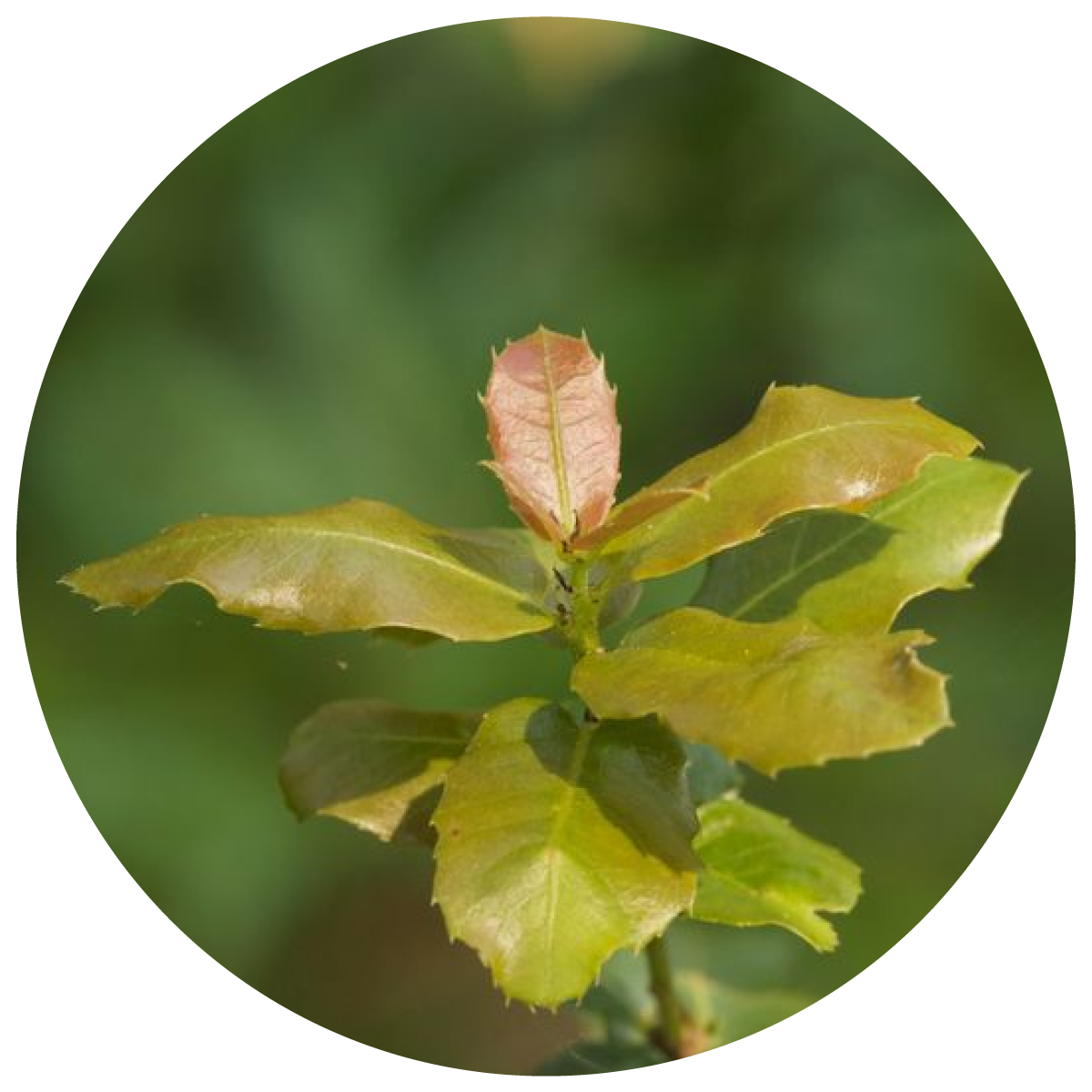
A rare Gallipoli Oak – a small prickly oak tree, that along the ridges and valleys of the Gallipoli peninsula. Their intense prickly nature provided the first major obstacle for the Anzac soldiers running up the Gallipoli hills. After several days of intense bombing, particularly by the Royal Navy, not many of these oaks were left standing near the battle zone. Acorns were collected by several soldiers during the campaign and sent or brought back to Australia where some were subsequently planted. This particular Gallipoli Oak was provided by Peter Whitelaw, the Director of the Gallipoli Oak Project, a centenary of Anzac project that provided Gallipoli Oak seedlings to 600 primary schools in Victoria.
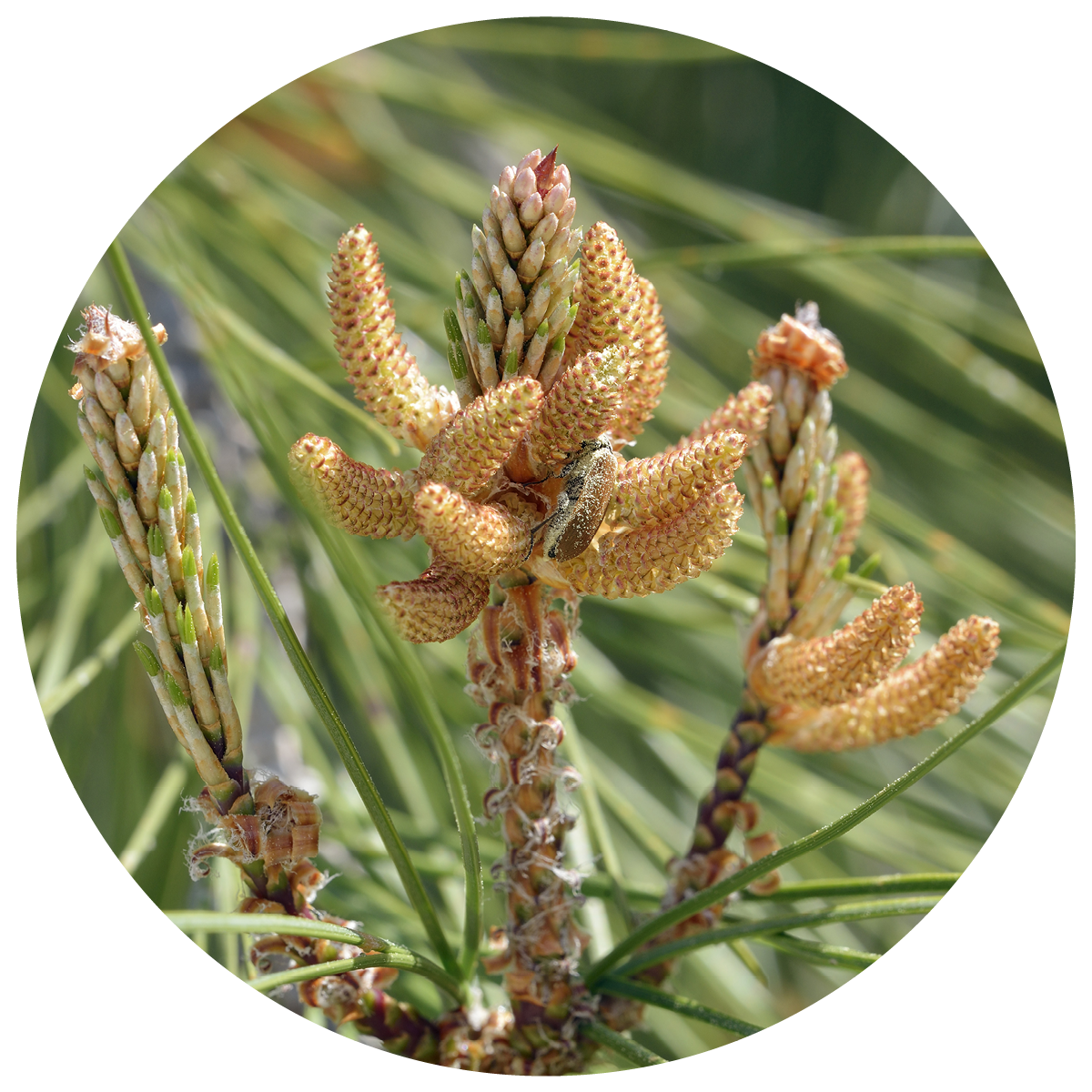
Two ‘lone pine’ trees – located directly opposite the garden either side of the Cenotaph, grown from pine cone seeds sent back from the Gallipoli campaign.
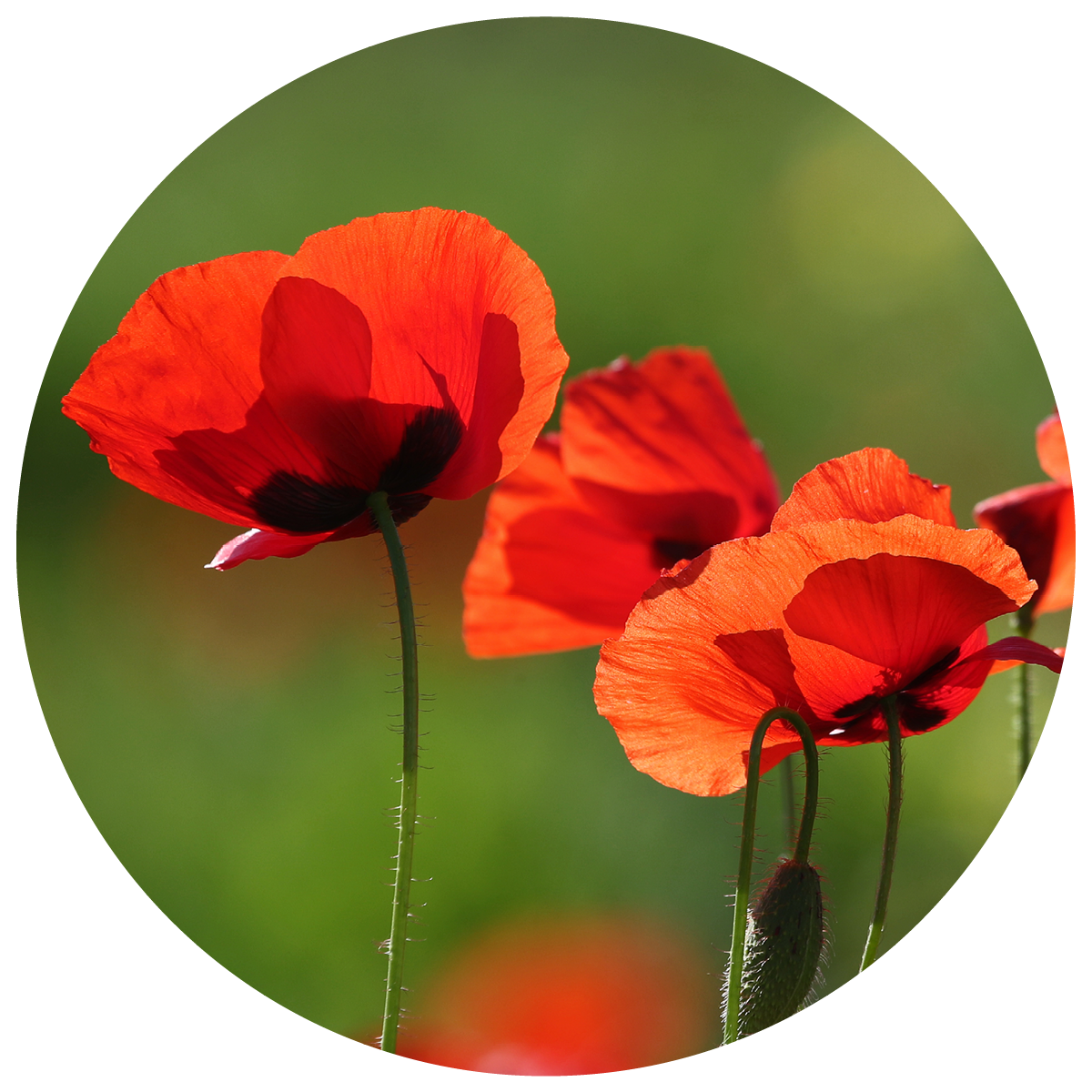
Poppies – The Flanders poppy has long been a part of Remembrance Day, the ritual that marks the Armistice of 11 November 1918, and is also increasingly being used as part of Anzac Day observances. During the First World War, red poppies were among the first plants to spring up in the devastated battlefields of northern France and Belgium. In soldiers’ folklore, the vivid red of the poppy came from the blood of their comrades soaking the ground. The sight of poppies on the battlefield at Ypres in 1915 moved Lieutenant Colonel John McCrae to write the poem In Flanders fields. In English literature of the nineteenth century, poppies had symbolised sleep or a state of oblivion; in the literature of the First World War a new, more powerful symbolism was attached to the poppy – the sacrifice of shed blood.
 Rosemary – Since ancient times this aromatic herb has been believed to have properties to improve the memory. Perhaps because of this, rosemary became an emblem of both fidelity and remembrance in literature and folklore. Traditionally, sprigs of rosemary are worn on Anzac Day and sometimes on Remembrance Day, and are usually handed out by Legacy and the RSL. Rosemary has particular significance for Australians, as it is found growing wild on the Gallipoli peninsula.
Rosemary – Since ancient times this aromatic herb has been believed to have properties to improve the memory. Perhaps because of this, rosemary became an emblem of both fidelity and remembrance in literature and folklore. Traditionally, sprigs of rosemary are worn on Anzac Day and sometimes on Remembrance Day, and are usually handed out by Legacy and the RSL. Rosemary has particular significance for Australians, as it is found growing wild on the Gallipoli peninsula.
Read the PDF book Gallipoli Memorial Garden Project
by Dr John V Basarin OAM
To view the book full screen press this icon just under the book below ![]() and to download the book to your device press this icon
and to download the book to your device press this icon To view thumbnails of the pages press this icon

Ms Nina Taylor MP and Hampton RSL President LCDR Helen Ward

Project Founder Dr John V Basarin OAM
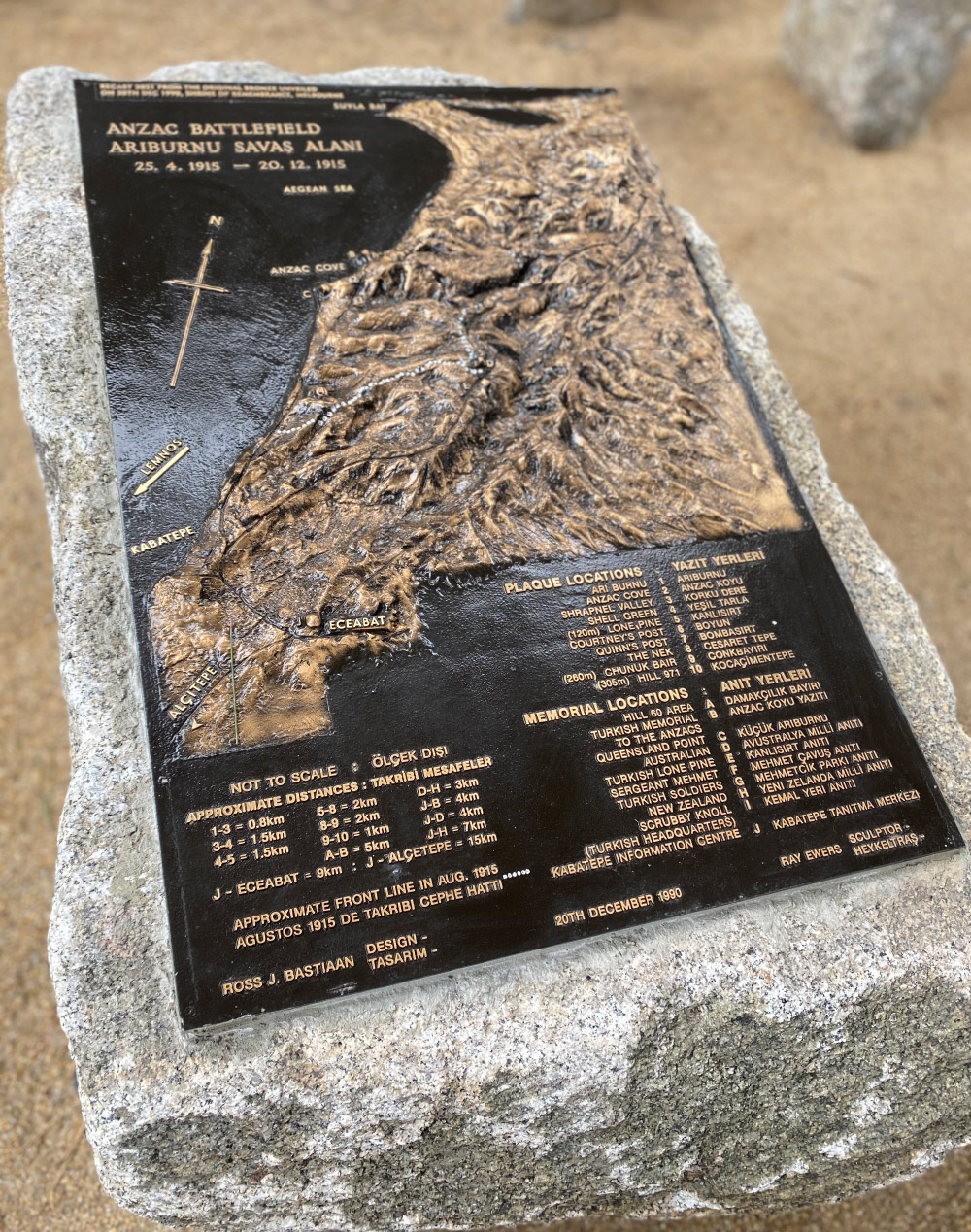
Relief Map of the Gallipoli Battle Scene 1915
